
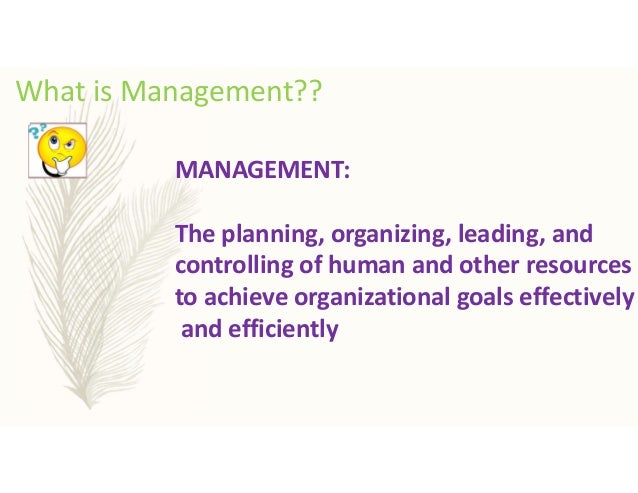
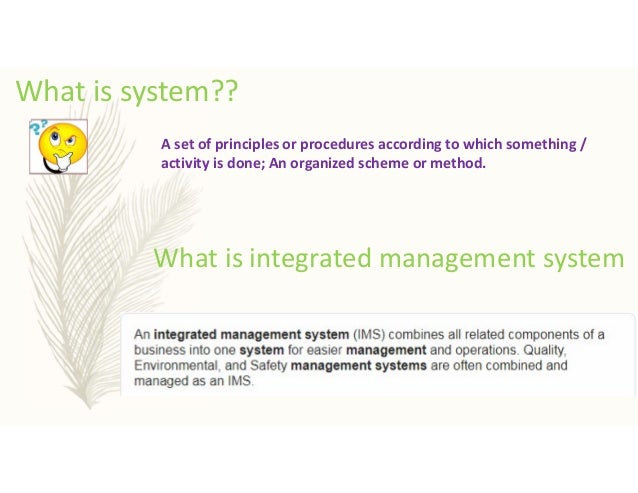
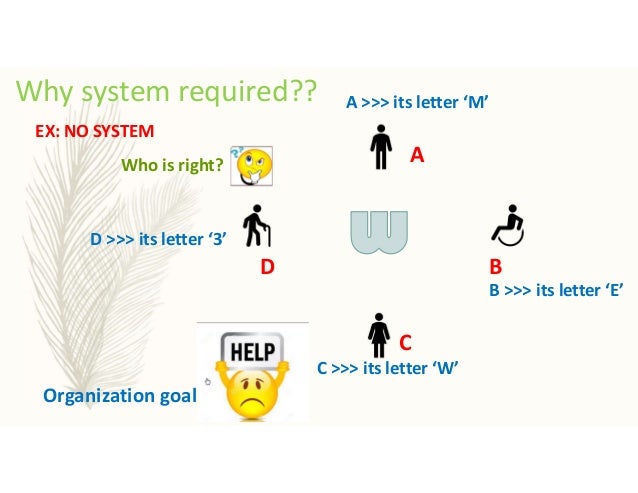
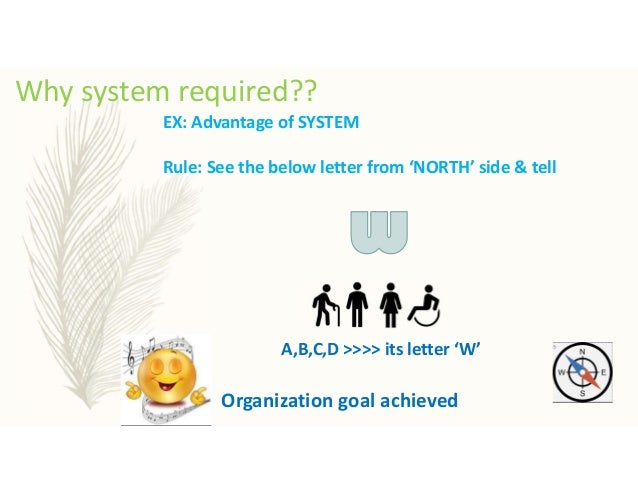
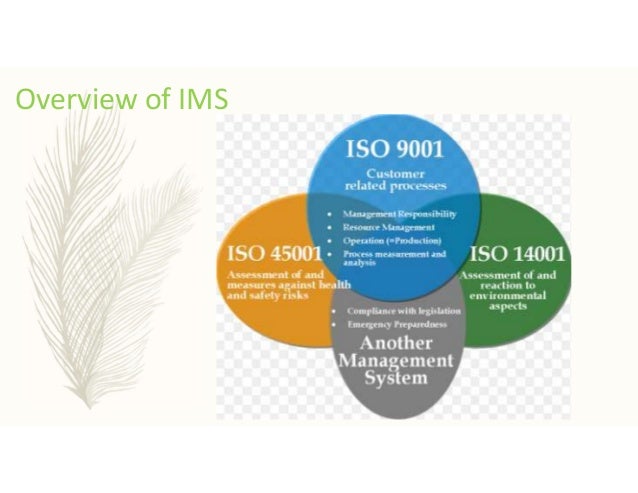
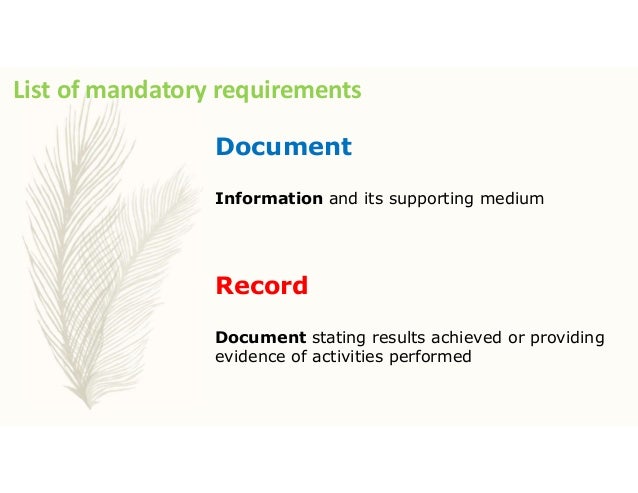
Published on
ISO 9001, 14001, 45001 (IMS) basics training material
- 1. Awarness training on IMS system ISO 9001:2015, ISO 14001: 2015 & ISO 45001:2018. PREPARED: R.RANGANATHAN
- 2. Why this training is required ? when already materials standards available? OBJECTIVE – Success of any activity purely depends on the understanding of the subject. In the above examples if the doctor not understand the patient history the operation will not be positive. Similarly organization results & IMS implementation success depends on the employees understand the system correctly.
- 3. What is Management?? MANAGEMENT: The planning, organizing, leading, and controlling of human and other resources to achieve organizational goals effectively and efficiently
- 4. What is system?? A set of principles or procedures according to which something / activity is done; An organized scheme or method. What is integrated management system
- 5. Why system required?? A B C D EX: NO SYSTEM D >>> its letter ‘3’ Who is right? A >>> its letter ‘M’ B >>> its letter ‘E’ C >>> its letter ‘W’ Organization goal
- 6. Why system required?? EX: Advantage of SYSTEM Rule: See the below letter from ‘NORTH’ side & tell A,B,C,D >>>> its letter ‘W’ Organization goal achieved
- 7. Overview of IMS
- 8. Overview of IMS ISO 9001 ISO 14001 ISO 45001 TALKS ABOUT QUALITY MANAGEMENT SYSTEM TALKS ABOUT ENVIRONMENT MANAGEMENT SYSTEM TALKS ABOUT HEALTH & SAFETY MANAGEMENT SYSTEM IMPROVE OVER ALL ORGANIZATION PERFORMANCE & PROVIDE SUSTAINABLE DEVELOPMENTS PROTECT ENVIRONMENT, PREVENT OR MITIGATE ADVERSE ENVIRONMENT IMPACTS IT ENABLES TO PROVIDE SAFE & HEALTHY WORKPLACE, PREVENT WORK RELATED INJURY & ILL HELATH AND CONTINUALLY IMPROVE OHS PERFORMANCE CONSITENTLY PROVIDE PRODUCT & SERVICE TO MEET CUSTOMER, STATUATORY AND REGULATORY REQUIREMENTS FULFILLMENT OF COMPLAINCE OBLIGATIONS IT HELPS TO FULL FILL LEAGAL REQUIREMENTS & OTHER REQUIREMENTS ENHACE CUSTOMER SATISFACTION ENHANCE ENVIRONMENT PERFORMANCE IT IMPROVES OHS PERFORMANCE ADRESS RISK AND OPPORTUNITIES ASSOCIATED WITH ITS CONTEXT AND BUSINESS OBJECTIVES ACHIEVE ENVIRONMENT OBJECTIVES ELIMINATE HAZARDS & MINIMIZE OHS RISK BY EFFECTIVE PREVENTIVE MEASURES
- 9. IMPORTANCE OF IMS IN PROCESS APPROACH PROCESS “Set of interrelated or interacting activities” INPUT OUTPUT METHODOLOGY (PROCEDURES / SOP) Controls to the process Check & monitor / measure the performance Resources Equipment/ Tools Material People/ Manpower Information GOOD PRODUCT / SERVICE
- 10. IMPORTANCE OF IMS IN PROCESS APPROACH ISO 9001 ISO 45001 IS0 14001 PROCESS IMS
- 11. IMS IN PDCA APPROACH WITH CLAUSES Quality / Enivronment / OHS Management system (4) Intended outcome of Environment & OHS management system Internal & Ext issues
- 12. Important TERMS & DEFNITIONS ENVIRONMENT: Surroundings in which an organization operates including air, water, land , natural resources, flora, fauna humans and their interrelations QUALITY: Quality of the product or service refers to the perception of the degree to which product or service meets the customers expectations. HEALTH & SAFETY: Regulations & Procedures intended to prevent accident or injury in work place or public environments
- 13. Important TERMS & DEFNITIONS TERMS DEFNITIONS CONFORMITY Fulfillment of requirement CONTINUAL IMPROVEMENT Recurring activity to Enhance performance CUSTOMER Organization or Person that receives a product CUSTOMER SATISFACTION Customer perception of the degree to which the customer’s requirements have been fulfilled DOCUMENTED INFORMATION Information required to be controlled and maintained by an organization on the medium which its contained DOCUMENT Information and its supporting medium (Ex: Policy, procedures etc) RECORD Document stating results achieved or providing evidence of activities performed TRACEABILITY Ability to trace the history, application or location of which under consideration NON CONFORMITY Non fulfillment of requirement CORRECTION Action to eliminate a detected non conformity CORRECTIVE ACTION Action to eliminate the cause of non conformity and to prevent the recurrence OBJECTIVE Results to be achieved MEASUREMENT Process to determine value
- 14. IMS Clause comparison Clause Number ISO 450001:2018 ISO 9001:2015 ISO 14001:2015 1 1SCOPE 1SCOPE 1SCOPE 2 2NORMATIVE REFERENCES 2NORMATIVE REFERENCES 2NORMATIVE REFERENCES 3 3TERMS AND DEFINITIONS 3TERMS ANDDEFINITIONS 3TERMS AND DEFINITIONS 4 4CONTEXTOF THE ORGANIZATION (Title) 4CONTEXT OF THE ORGANIZATION (Title) 4CONTEXTOF THE ORGANIZATION (Title) 4.1 Understanding the organization & its context 4.1 Understanding the organization & its context 4.1Understanding the organization & its context 4.2 Understanding the needs and expectations of interested parties 4.2 Understanding the needs and expectations of interested parties 4.2Understanding the needs and expectations of interested parties 4.3 Determining the scope of the OH & S management system 4.3 Determining the scope of the QMS 4.3Determining the scope of the EMS Nil 4.4 QMS and its processes (Title) Nil 4.4 OH & S management system 4.4.1(paragraph-1about QMS) 4.4Environmental management system Nil 4.4.1(paragraph-2about processes of QMS) Nil Nil 4.4.2 (about documented information on processes) Nil 5 5LEADERSHIP (Title) 5LEADERSHIP (Title) 5LEADERSHIP (Title) Nil 5.1 Leadership and commitment (Title) Nil 5.1 Leadership and commitment 5.1.1General 5.1Leadership and commitment Nil 5.1.2Customer focus Nil Nil 5.2 Policy (Title) Nil 5.2 OH & S policy, paragraph-1 5.2.1Establishing the quality policy 5.2Environmental policy, paragraph-1 5.2 OH & S policy, paragraph-2 5.2.2Communicating the quality policy 5.2Environmental policy, paragraph-2 5.3 Organizational roles, responsibilities and authorities 5.3 Organizational roles, responsibilities and authorities 5.3Organizational roles, responsibilities and authorities 5.4 Consultation and participation of workers Nil Nil
- 15. IMS Clause comparison contd 6 6 PLANNING (Title) 6 PLANNING (Title) 6 PLANNING (Title) 6.1 Actions to address risks & opportunities (Title) 6.1 Actions to address risks & opportunities (Title) 6.1 Actions to address risks & opportunities (Title) 6.1.1 General 6.1.1 (about requirements when planning QMS) 6.1.1 General Nil 6.1.2 (about addressing risks & opportunities) Nil 6.1.2 Hazard Identification and assessment of risks and opportunities Nil 6.1.2 Environmental aspects 6.1.3 Determination of legal requirements and other requirements Nil 6.1.3 Compliance obligations 6.1.4 Planning action Nil 6.1.4 Planning action 6.2 OH & S objectives and planning to achieve them (Title) 6.2 Quality objectives and planning to achieve them (Title) 6.2 Environmental objectives and planning to achieve them (Title) 6.2.1 OH & S objectives 6.2.1 (about quality objectives) 6.2.1 Environmental objectives 6.2.2 Planning actions to achieve OH & S objectives 6.2.2 (about achievement planning) 6.2.2 Planning actions to achieve environmental objectives 8.1.3 Management of change 6.3 Planning of changes Nil 7 7 SUPPORT (Title) 7 SUPPORT (Title) 7 SUPPORT (Title) Nil 7.1 Resources (Title) Nil 7.1 Resources 7.1.1 General 7.1 Resources Nil 7.1.2 People Nil Nil 7.1.3 Infrastructure Nil Nil 7.1.4 Environment for the operation of processes Nil Nil 7.1.5 Monitoring and measuring resources (Title) Nil Nil 7.1.5.1 General Nil Nil 7.1.5.2 Measuring traceability Nil Nil 7.1.6 Organizational knowledge Nil 7.2 Competence 7.2 Competence 7.2 Competence 7.3 Awareness 7.3 Awareness 7.3 Awareness 7.4 Communication (Title) Nil 7.4 Communication (Title) 7.4.1 General 7.4 Communication 7.4.1 General 7.4.2 Internal Communication Nil 7.4.2 Internal Communication 7.4.3 External Communication 7.4.3 External Communication 7.5 Documented information (Title) 7.5 Documented information (Title) 7.5 Documented information (Title) 7.5.1 General 7.5.1 General 7.5.1 General 7.5.2 Creating and updating 7.5.2 Creating and updating 7.5.2 Creating and updating Nil 7.5.3 Control of documented information (Title) Nil 7.5.3 Control of documented information, paragraph-1 7.5.3.1 (about purpose of control) 7.5.3 Control of documented information, paragraph-1 7.5.3 Control of documented information, paragraph-2 & 3 7.5.3.2 (about requirements for control) 7.5.3 Control of documented information, paragraph-2 & 3
- 16. IMS Clause comparison contd 8 8 OPERATION (Title) 8 OPERATION (Title) 8 OPERATION (Title) 8.1 Operational planning and control 8.1 Operational planning and control 8.1 Operational planning and control 8.2 Emergency preparedness and response Nil ; Nil 8.2 Requirements for products & services (Title) Nil Nil 8.2.1 Customer communication Nil Nil 8.2.2 Determining the requirements for products & services Nil Nil 8.2.3 Review of the requirements for products & services (Title) Nil Nil 8.2.3.1 & 8.2.3.2 (about review, documented info) Nil Nil 8.2.4 Changes to requirements for products & services Nil Nil 8.3 D & D of products and services (Title) Nil Nil 8.3.1 to 8.3.6 – General, Planning, Inputs, Controls, Outputs, Changes Nil Nil 8.4 Control of externally provided processes, products and services (Title) Nil Nil 8.4.1 General Nil Nil 8.4.2 Type and extent of control Nil Nil 8.4.3 Information for external providers Nil Nil 8.5 Production and service provision (Title) Nil Nil 8.5.1 Control of production and service provision Nil Nil 8.5.2 Identification and traceability Nil Nil 8.5.3 Property belonging to customers or external providers Nil Nil 8.5.4 Preservation Nil Nil 8.5.5 Post-delivery activities Nil Nil 8.5.6 Control of changes Nil Nil 8.6 Release of products and services Nil Nil 8.7 Control of nonconforming outputs (Title) Nil Nil 8.7.1 (about required control) Nil Nil 8.7.2 (about required documented information) Nil
- 17. IMS Clause comparison contd 9 9PERFORMANCE EVALUATION(Title) 9PERFORMANCE EVALUATION (Title) 9PERFORMANCE EVALUATION(Title) 9.1Monitoring, measuring, analysis and evaluation (Title) 9.1Monitoring, measuring, analysis and evaluation (Title) 9.1Monitoring, measuring, analysis and evaluation (Title) 9.1.1General 9.1.1General 9.1.1General, paragraph-2, 4, 6 9.1.1General Nil 9.1.1General, paragraph-1, 3, 5 9.1.2Evaluation of compliance Nil 9.1.2Evaluation of compliance Nil 9.1.2Customer satisfaction Nil Nil 9.1.3Analysis and evaluation Nil 9.2Internal audit (Title) 9.2Internal audit (Title) 9.2Internal audit (Title) 9.2.1General 9.2.1(about general requirements) 9.2.1General 9.2.2Internal audit programme 9.2.2(about audit programmes) 9.2.2Internal audit programme Nil 9.3Management review (Title) Nil 9.3Management review, paragraph-1 9.3.1General 9.3Management review, paragraph-1 9.3Management review, paragraph-2 9.3.2Management review inputs 9.3Management review, paragraph-2 9.3Management review, paragraph-3 9.3.3Management review outputs 9.3Management review, paragraph-3 10 10IMPROVEMENT(Title) 10IMPROVEMENT(Title) 10IMPROVEMENT(Title) 10.1General 10.1General 10.1General Nil 10.2Nonconformity and corrective action (Title) Nil 10.2Incident, Nonconformity & corrective action, paragraph-1, 2 10.2.1(about required actions) 10.2Nonconformity & corrective action, paragraph-1, 2 10.2Incident, Nonconformity & corrective action, paragraph-3 10.2.2(about required documented information) 10.2Nonconformity & corrective action, paragraph-3 10.3Continual improvement 10.3Continual improvement 10.3Continual improvement
- 18. Advantage of IMS is TEN common elements
- 19. IMS requirements
- 20. List of mandatory requirements Document Information and its supporting medium Record Document stating results achieved or providing evidence of activities performed
- 21. List of mandatory requirements ISO 9001:2015
- 22. List of mandatory requirements ISO 9001:2015 - Records
- 23. List of mandatory requirements ISO 14001:2015
- 24. List of mandatory requirements ISO 14001:2015 Records
- 25. List of mandatory requirements ISO 45001
- 26. List of mandatory requirements ISO 45001 - Records
- 27. Why EMS? Environmental performance closely scrutinized by shareholders, employees, creditors, regulators, environmental groups and the general public. Their responses could significantly affect business and share prices. Environmental performance can have trade implications.
- 28. Why H&S? The total losses attributable to illness & injury is often quantified by the organizations, but its just tip of the ice berg Losses due to building and plant damage, replacement cost etc. amount from 6 to 53 times loss incurred through injury and illness are hidden beneath the surface
- 29. Common programmes of EMS and OHSAS? Examples: Chemical control including purchasing, tracking of MSDS, labeling, storage, and transportation. Inspection including inspections of the general plant, critical parts, special systems (fire & other emergency response systems), maintenance Incident investigation including root cause analysis, counter- measures, follow-up, and incident data analysis Emergency response to fire, spill response, and disasters. Training and education related to common programs. Product liability including system safety techniques used to minimize product liabilities (precursors to life cycle analysis) Auditing
- 30. Important TERMS & DEFNITIONS TERMS DEFNITIONS Interested Party (EMS) Person or group concerned with or affected by the environmental performance of an organization Interested Party (OH&S) Person or group inside or outside the workplace, concerned with or affected by the OH&S performance of an organization Prevention Of Pollution Uses of processes, practices, materials, products, services or energy to avoid, reduce or control (separately or in combination) the creation, emission or discharge of any type of pollutant or waste, in order to reduce adverse environmental impacts. Environmental Aspect Element of an organisation’s activities or products or services than can interact with the environment Note : A significant environmental aspect has or can have a significant environmental impact Environmental Impact Any change to the environment, whether adverse or beneficial, wholly or partially resulting from an organization's environmental aspects OBJECTIVE Results to be achieved MEASUREMENT Process to determine value
- 31. What is POLLUTION? SOURCE Processes Activities Products Services PATHWAY Air Water Solid Built environment Quality of Life Noise Vibration Visual Impact TARGET Ozone layer Rain forest Forest Lake/River Ground water Eco systems Local Community
- 32. ENVIRONMENTAL PROBLEMS? Global Warming •Stratospheric Ozone Depletion •Acid Rain •Water Quality •Persistent Organics •Air Quality •Noise/Vibration •Visual Impact/ Amenity •Waste Management •Contaminated Land •Major Spills and Incidents •Release of Genetically Manipulated Organisms
- 33. ASPECT & IMPACT? Aspects Air emissions (exhaust) •Water consumption •Fuel release (accidental spills) •Fuel release (accidental spills) •Noise generation •Energy consumption (lights left on) •Paper recycled Impacts Air quality degraded •Water resource depleted •Storm water contaminated •Soil contaminated •Area nuisance •Increased CO2 from coal-fired power plant emissions •Landfill space conserved, raw materials conserved
- 34. LEGAL & OTHER REQUIREMENTS Procedures to identify and access applicable legal & other requirements • Keep information up to date • Communicate requirements to :- – employees - Person working under the control of organisation – interested parties
- 35. LEGAL & OTHER REQUIREMENTS The statutes relating to OH&S are broadly divided into three:- • Statutes for safety at workplaces • Statutes for safety of substances • Statutes for safety of activities
- 36. LEGAL REQUIREMENTS The major legislations are:- • The Factories Act, 1948 • Mines Act, 1952 • Dock workers (Safety, welfare & health) Act, 1986 • Plantation Labour Act, 1951 • Explosives Act, 1884 • Petroleum Act, 1934 • Insecticide Act, 1968 • Indian Electricity Act, 1910 • Indian Boilers Act, 1923 • Indian Atomic Energy Act, 1962 • Building and Other Construction Workers (Regulation of Employment and Conditions of Service) Act, 1996 • Beedi and Cigar Workers' (Conditions of Employment) Act, 1966 .
- 37. THANK YOU QUESTIONS AND FEEDBACK Ranganathan Radhakrishnan Mobile: + 91 8754449482
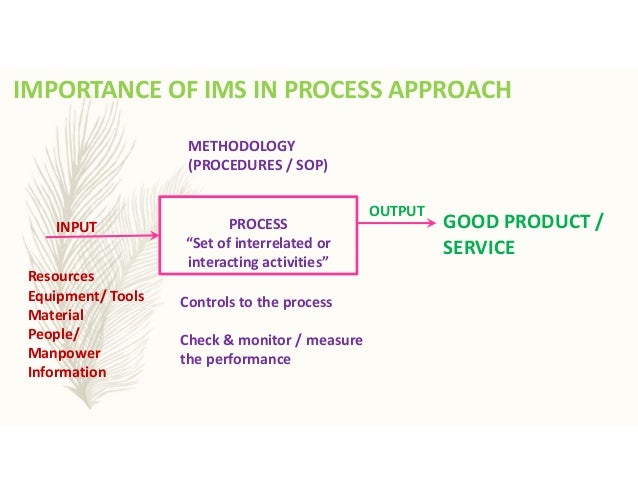
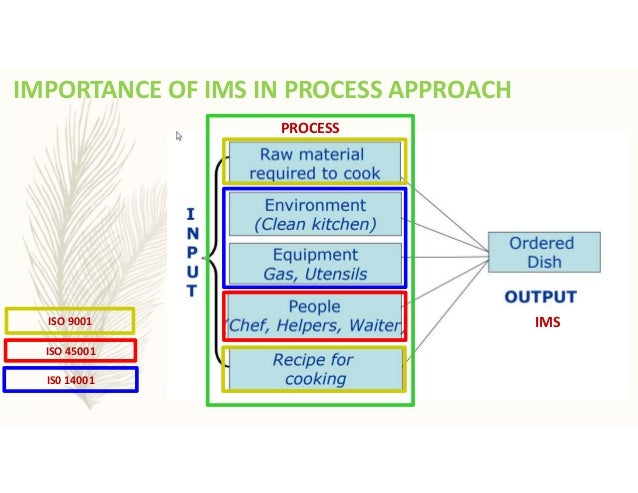
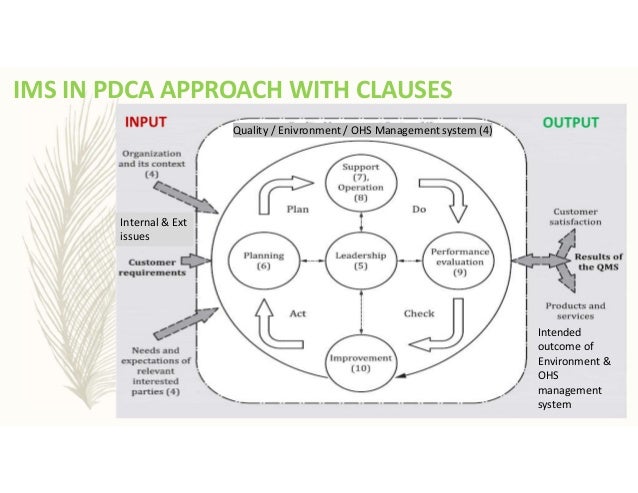
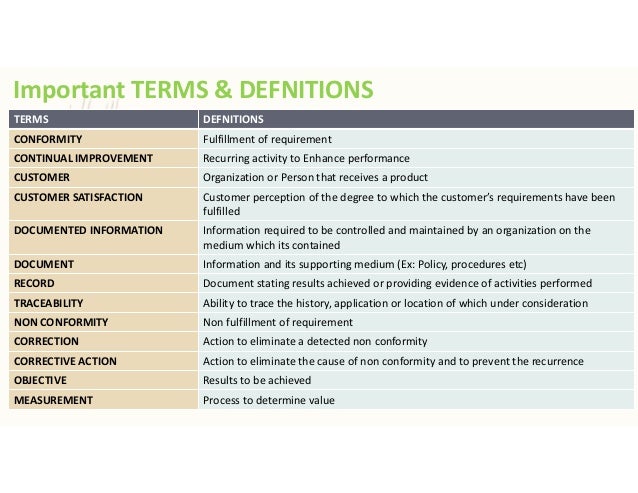
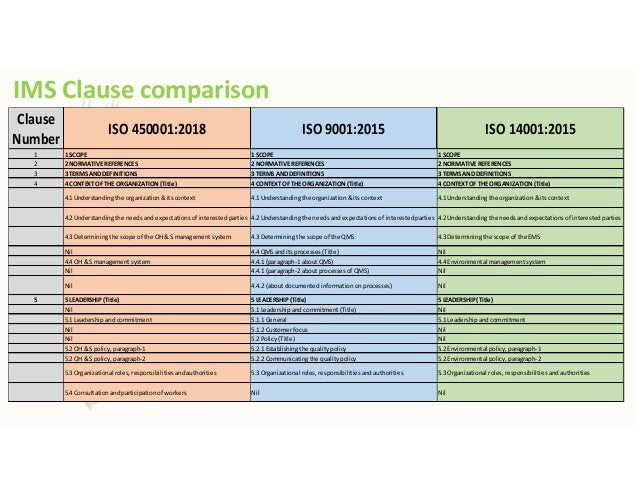
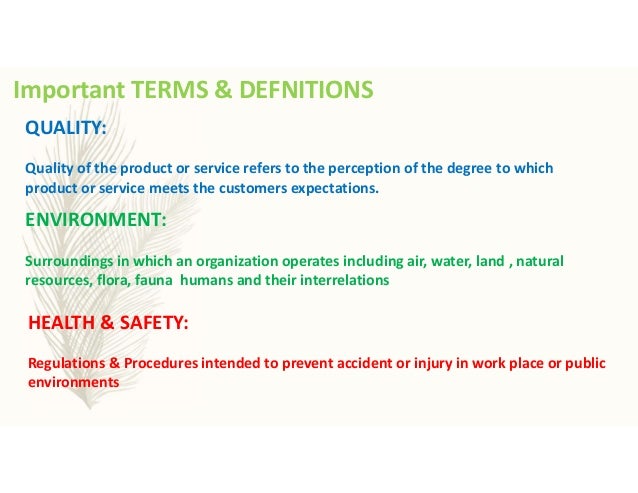
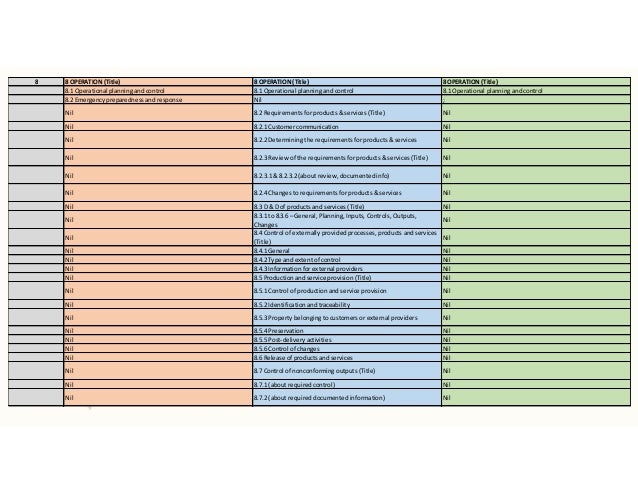

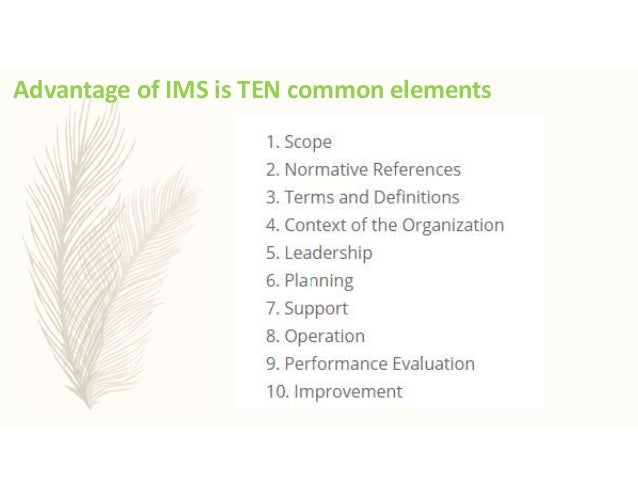
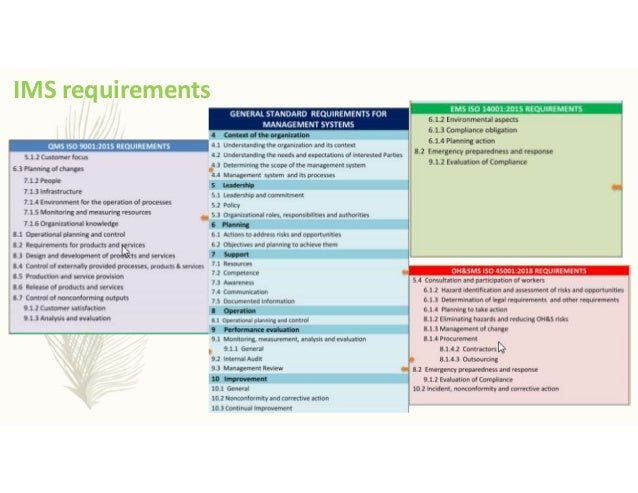

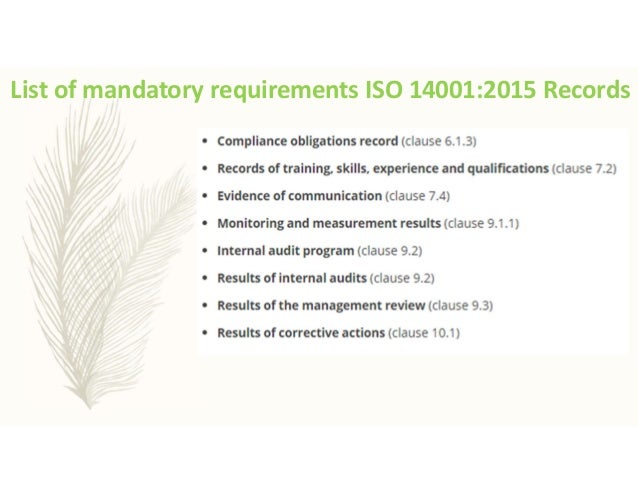
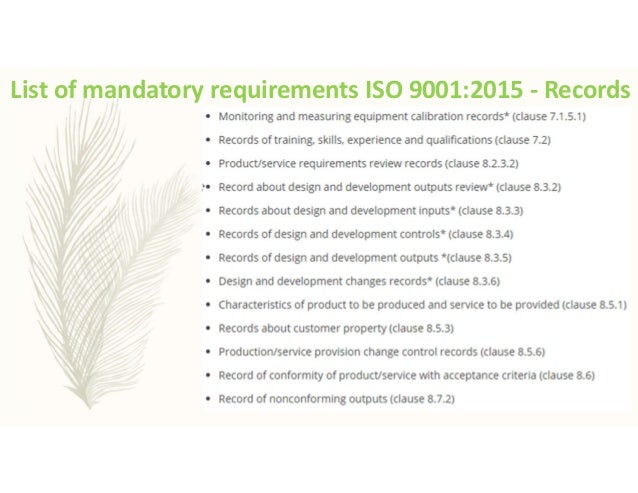
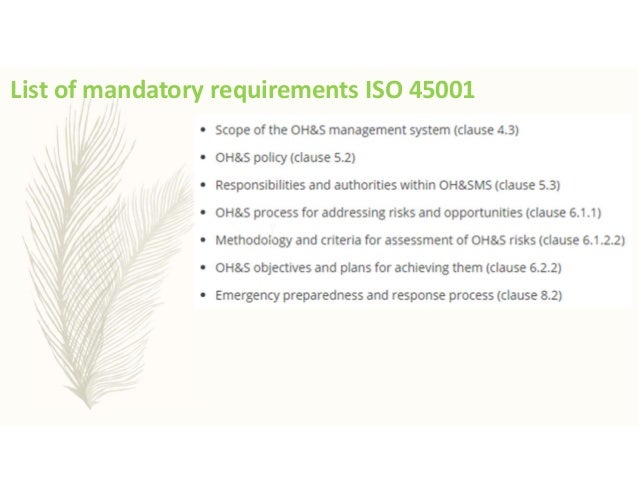
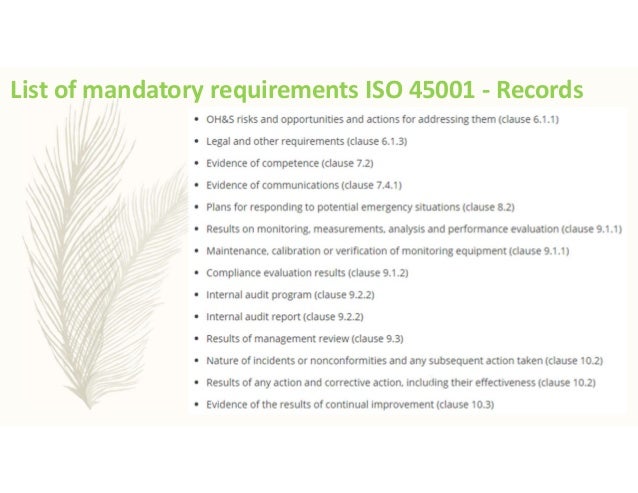


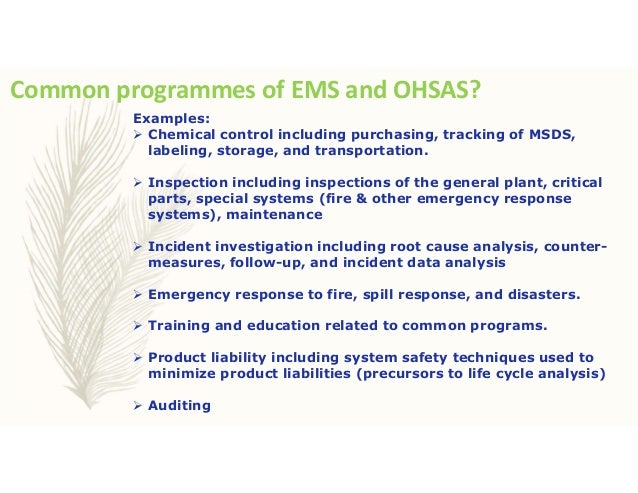
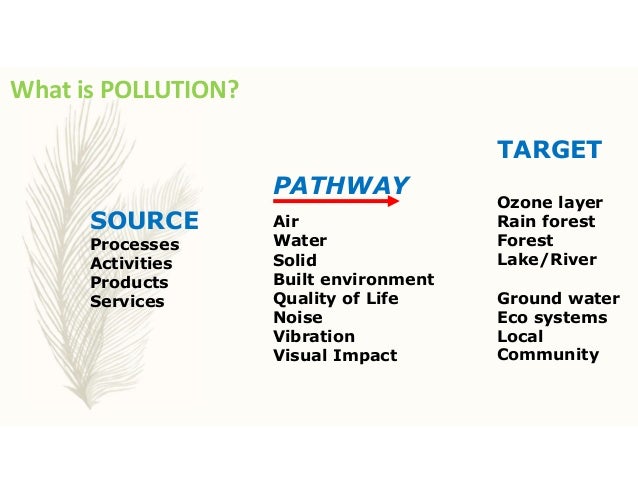
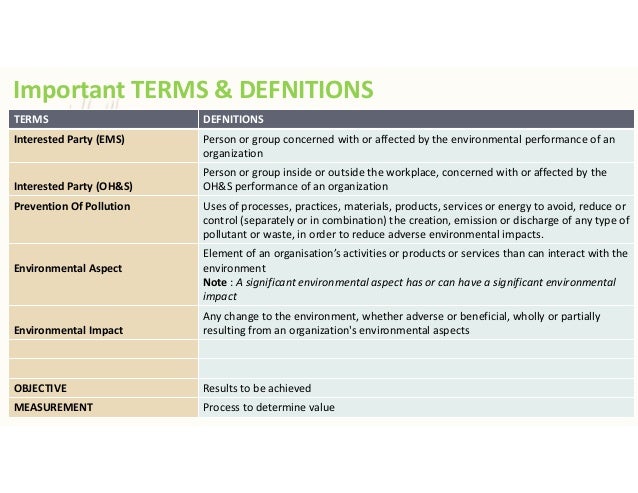

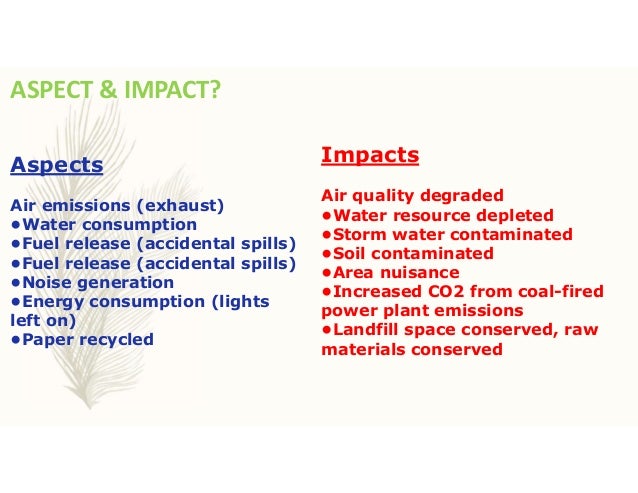
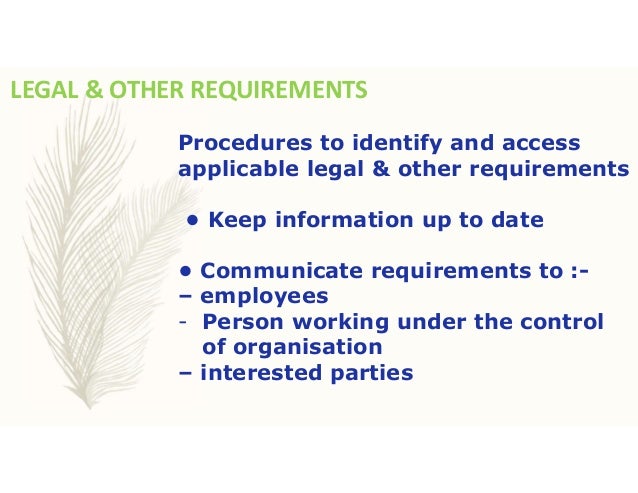
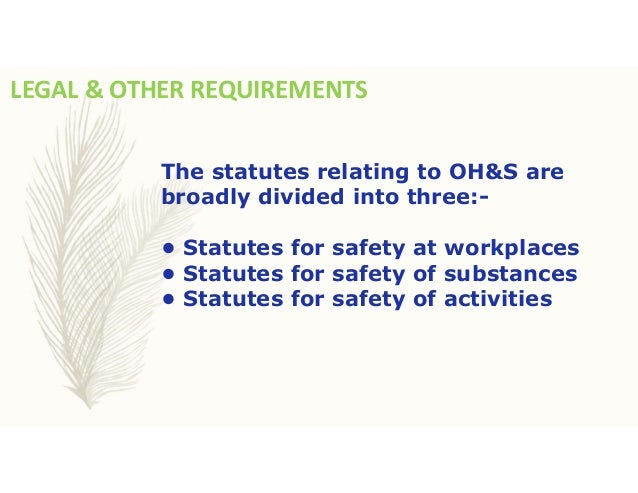
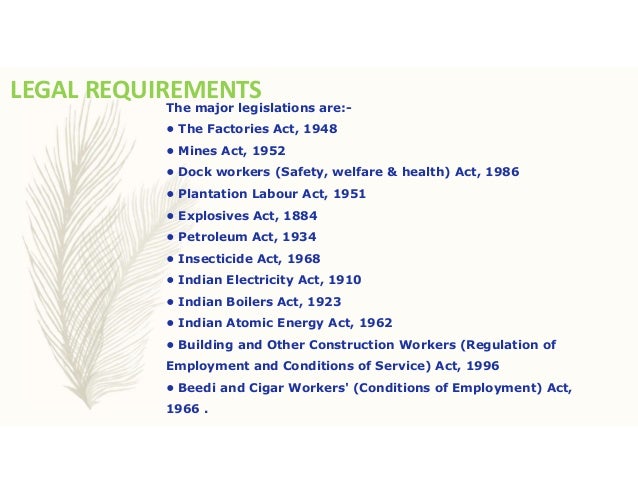 SO 9001, 14001, 45001 (IMS) basics training material
SO 9001, 14001, 45001 (IMS) basics training material
Impressive Thanks for the post. Interesting stuff to read. Keep it up.
ReplyDeleteISO 45001 Training
ISO 9001 is the ultimate global benchmark for quality management and a critical tool for boosting your company’s success, profitability and market potential. No matter what you’re looking for, NRKC can talk you through how an ISO 9001 management system could put your company on a path to business success
DeleteWow, the article is easy to read and understand to find important information
ReplyDeleteISO 50001 Internal Auditor Training
very interesting.
ReplyDeleteISO Training
Hi! My name is samrio and I represent IT Software Solutions Pvt Ltd based in Mumbai, India. I am here to share my experience on Training ISO 14001 throughout my 20 years of work in the IT field. I look forward to sharing my opinions and hearing from fellow bloggers!
ReplyDeleteUseful information
ReplyDeleteformation iso
Amazing! Really useful
ReplyDeleteISO Training in Vietnam
nice post.
ReplyDeleteiso 50001 training
Useful blog.Thank you for sharing
ReplyDeleteISO 45001 certification
Thanks you for sharing this unique useful information content with us. Really awesome work.iso 14001 courses
ReplyDeleteThanks for an insightful post.These tips are really helpful. Thanks a lot.Keep it up.Keep blogging.!!
ReplyDeleteISO 50001 internal auditor training
I found your blog and it was really useful as well as informative thanks for sharing such an article with us. We also provide services related to ims internal auditor course
ReplyDeleteISO 14001 Certification A Greener Future, A Brighter Tomorrow - Is your business committed to a sustainable future? ISO 14001 Certification is your passport to environmental excellence.
ReplyDelete